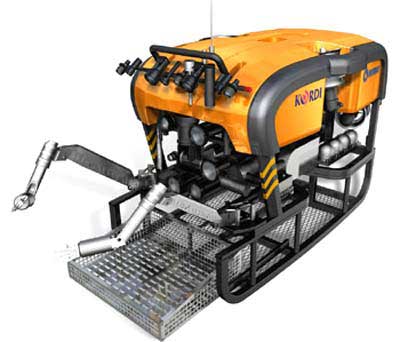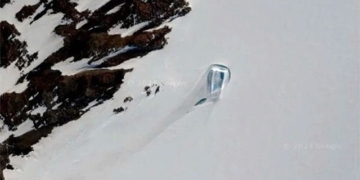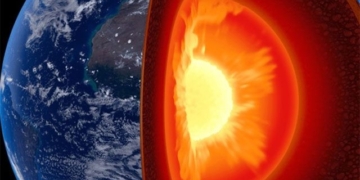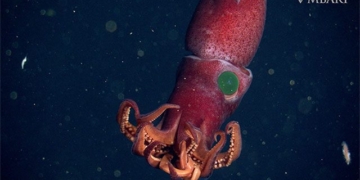The Korea Ocean Research and Development Institute has announced plans to launch an unmanned underwater vehicle named “Hemire” to explore the ocean at a depth of 6 kilometers on May 3rd.
After 7 years of research and anticipation, a team of scientists led by senior researcher Lee Pan-mook from the Korea Ocean Research and Development Institute is set to launch the remote-controlled unmanned submarine to explore the ocean at a depth of 6 kilometers on May 3rd.
 |
|
The unmanned underwater vehicle Hemire from South Korea. |
The Hemire submarine will be deployed in the ocean at the Kojedo branch of the institute, located in the northern part of Gyeongsang Province, South Korea. One year later, the Hemire will be moved to the Pacific Ocean.
The Hemire submarine measures 3.3 meters in length, 1.8 meters in width, and 2.2 meters in height, weighing 3.2 tons, with a diving speed of approximately 10.8 kilometers per hour.
The Hemire submarine is equipped with two robotic arms that capture all cross-sectional images of the ocean floor. This enables the vehicle to study minerals or repair damaged underwater fiber optic cables.
A remote control operated by a technical expert will be responsible for managing the signals. The signals received from the submarine will be transmitted back to the research operation center of the institute.
Additionally, the Hemire submarine is tasked with mapping the ocean using a combination of sensors and recording devices.
Before the Hemire submarine is officially launched into the ocean, it has undergone testing in the South China Sea under the supervision of lead scientist Lee Pan-mook.
During the testing process, various flora and fauna were discovered, and notably, the Hemire submarine is highly beneficial for locating sunken ships.
With an investment of 12 billion won in research and development of the Hemire submarine, South Korea will become the fourth country in the world, after the United States, France, and Japan, to master the technology of producing submarines that operate at depths of 6 kilometers.
Moreover, the team of scientists led by senior researcher Lee Pan-mook is also developing a self-recharging battery source for underwater vehicles.
Ngoc Huyen

















































